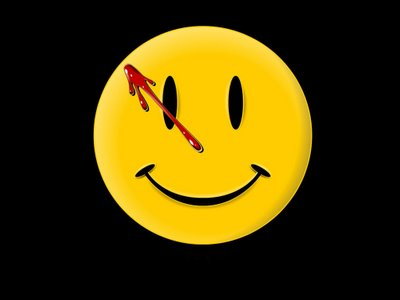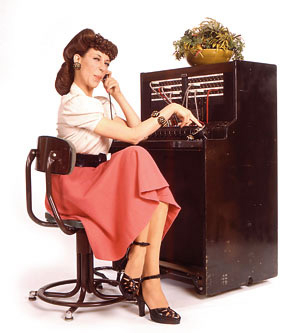An Infinite Circle of Anti-Utopias
The ending of Watchmen seemed strikingly similar to the ending of The Handmaid’s Tale when I started thinking about the books in terms of utopia. That last image in Watchmen of the editor’s assistant’s shirt definitely got my attention. Ozymandius says, after he realizes his ‘victory’, that now he can move on to creating utopia–but judging from the reappearance of creepy smiley face, absolutely nothing has changed over the course of the apocalyptic events. The hatred and willfull stupidity of people like the editor of the Fronteirsman and his lackey will survive the apocalypse like cockroaches, according to Watchmen. And because there will always be hate-mongerers, utopia is impossible. The process of striving for utopia will repeat endlessly, one failed utopia on top of another (or inside of each other, like in “Tlon, Uqbar, Orbis Tertius” by Borges!)
The Handmaid’s tale begins, rather than ends, with an anti-utopia founded on mass murder. The transcript of the conference at the end suggests that Offred’s anti-utopia is finished, but we know next to nothing about the society of the people analyzing her story in this future. Do they really understand what went into the creation of Gilead and how oppressive it was? Do they know enough to keep it from happening again? In Watchmen, the clock at the end of each chapter is striking 12, but time doesn’t stop: as Dr. Manhattan said, “Nothing ever ends.” I got the feeling, maybe because of the flippant attitude of the presenter, that the people at conference weren’t in a position to stop another misguided attempt at utopia.
How do these infinite, circular failed attempts at utopia relate to gender and technology? Well, I’m not sure. But I think the link lies in how technologies of representation work (as we talked about on Monday). Representation is never perfect (Borges again). In these 2 books, it’s shown to be really deeply flawed, so much so that people can’t learn from representions of history enough to prevent history from repeating itself. The imperfection of historical accounts, coupled with hatred/indifference/misunderstandings, is a recipe for disaster. BY representing this problem, Watchmen and the Handmaid’s Tale try to fix it.
Comments are closed.


What I found really interesting is that this disturbing smiley face motif reoccurs throughout the graphic novel. As you mentioned, it looks vaguely like the clock, but i remember also seeing a similar shape repeat itself in other mediums as well. I can’t remember where it was, but it might have been on a foggy mirror or something similar. When I find it again I’ll write it up here.
A crater on Mars was shaped like a smiley face, when Jon decides human life is worth saving. I’d really like to know why! Does anyone have a theory?
Alright so I looked through the book and found a bunch of times when i think that the smiley imagery appears. The mars crater and the ketchup on the shirt are the most obvious. I checked the crater pictures, and although far away it just looks like smiley face, in the closer up shot you can see that just below the left eye is the destruction where jon’s creation used to be. Maybe it’s commentary on the way that the novel ends and jon’s part in ‘saving’ humanity.
As for some of the other instances that might qualify:
p. 7 from Chapter V: the blood splash across the face of the buddha poster
p. 1 and the title page from Chapter VII: the rubbed off part of the dusty Archimedes right where the blood splash over the smiley face eye would be. This image is featured twice: once on the title page and once in the introduction to the scene.
p. 19 from Chapter VII: the rubbed off part of the wet window in the same place in such a way that it seems really deliberate.
p. 12 from Chapter VIII: the finished jack o’lantern has a piece of pumpkin slime over the left eye.
p. 27 from Chapter IX: the mars crater as described above.
The title page from Chapter X: well this one is more out there. the radar screen on the title page has similar dimensions and patterns.
p.32 from Chapter XII: the ketchup on the smiley face shirt incident.
The bloody smiley face just seems to follow the characters everywhere. The juxtaposition between the two symbols (blood and the smiley face) remind the reader of the irrepressible imperfect nature of man which manifests itself in the anti-utopia that is forced on the world in the end of the novel and the methods that were used to obtain it.
In our group for the Comedian on Monday, we talked about how the smiley face is his symbol because he can laugh at anything–not because he thinks war and suffering are funny (I don’t think) but because there is no point to life. Then the smiley face appears on mars when Dr. Manhattan ‘logically’ proves life IS important BECAUSE it’s random. There it seems like a good symbol. At the end, it’s supposed to be unsettling again. I just don’t know what to do with the smiley face, which is frustrating since it’s figured so centrally.
I missed a lot of those references you pulled out! The Ch VII one with Night Owl’s goggles is especially interesting because the “zoom out” in the first frames is like the first frames of the book.